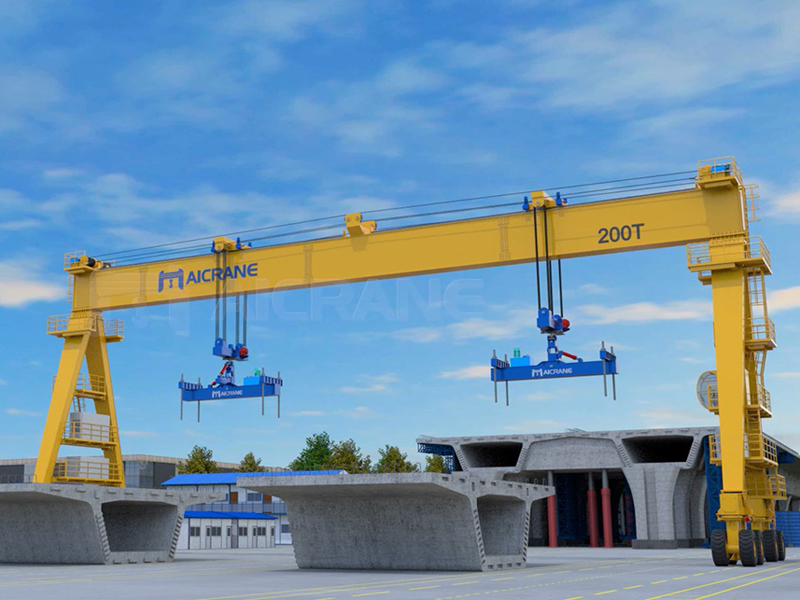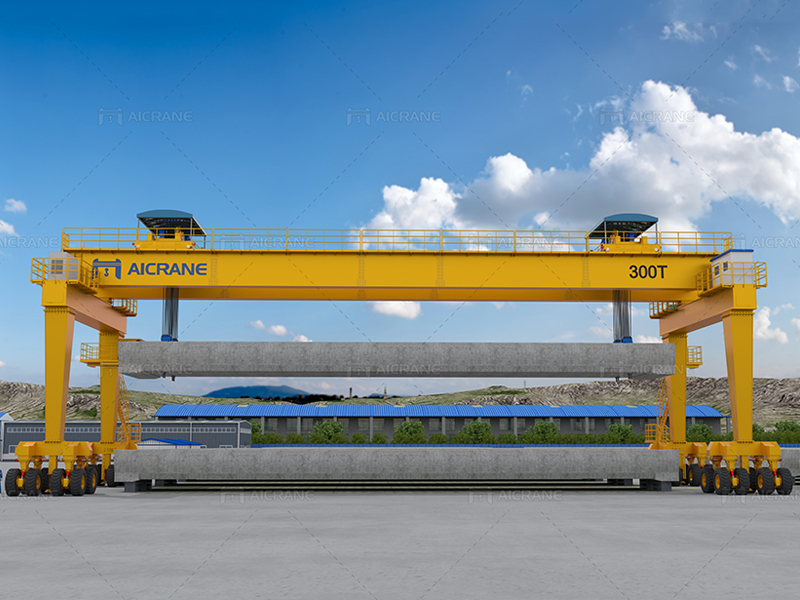Straddle carrier gantry cranes play a pivotal role in modern container handling facilities, efficiently transferring heavy cargo containers from ships to storage yards and vice versa. To ensure the smooth and uninterrupted operation of these essential machines, regular maintenance is paramount. Neglecting maintenance can result in costly downtime, reduced efficiency, and safety concerns. In this article, we will delve into the intricacies of straddle carrier gantry crane maintenance, emphasizing the significance of preventive measures and routine check-ups.

The Role of Straddle Carrier Gantry Cranes
Straddle carrier gantry cranes, often simply referred to as straddle carriers, are an integral component of logistics and cargo handling systems at ports and container terminals. Their distinctive design, which involves a set of wheeled legs surrounding the container, allows them to straddle over containers and lift them using a spreader mechanism. These straddle cranes are capable of lifting extremely heavy containers and transferring them from ships to storage yards or vice versa.
Maintenance as a Pillar of Reliability
The smooth operation of straddle carrier gantry cranes is essential to the efficiency of container handling operations, which are the lifeblood of global trade. A single crane’s malfunction can disrupt the entire supply chain, resulting in costly delays and potential safety hazards. Hence, maintaining these cranes is not merely a routine task but a crucial element of ensuring reliable, safe, and efficient cargo handling.
Preventive Maintenance vs. Reactive Maintenance
Maintenance of straddle carrier gantry cranes can be broadly categorized into two approaches: preventive maintenance and reactive maintenance. Understanding the distinction between these two is essential for ensuring the longevity of the equipment and the avoidance of costly downtime.

Preventive Maintenance
Preventive maintenance is the proactive approach to crane maintenance. It involves scheduled inspections, servicing, and replacement of components based on manufacturers’ recommendations and industry best practices. Preventive maintenance helps identify potential issues before they escalate into critical problems, ensuring that the crane operates at peak efficiency.
Key aspects of preventive maintenance for straddle carrier gantry cranes include:
Regular Inspections: Crane operators and maintenance teams should conduct routine inspections of the crane’s components, including electrical systems, hydraulics, structural elements, and safety mechanisms.
Lubrication: Proper lubrication of moving parts is vital to reduce friction and wear, extending the lifespan of critical components.
Component Replacement: Over time, certain components such as cables, bearings, wheels, and brakes may wear out and require replacement as part of the preventive maintenance schedule.
Electrical Systems: Routine checks of the electrical systems, including wiring, sensors, and control panels, are essential to prevent electrical failures.
Safety Systems: Ensuring that safety mechanisms, such as emergency stop buttons and limit switches, are functioning correctly is crucial to prevent accidents.
Documentation: Keeping comprehensive records of maintenance activities is essential for tracking the crane’s performance and ensuring that scheduled maintenance is carried out on time.
Reactive Maintenance
Reactive maintenance, on the other hand, involves addressing issues only when they occur. While it may seem like a cost-saving approach in the short term, it can lead to prolonged downtime, higher repair costs, and safety concerns. This approach should be avoided whenever possible, and preventive maintenance should be the primary focus.
Common Maintenance Challenges
Maintaining straddle carrier gantry cranes can be a complex task due to various operational challenges and environmental factors. Some of the common challenges include:
Corrosion: Cranes operating near saltwater environments are susceptible to corrosion. Regular cleaning and anti-corrosion treatments are essential to prevent structural damage.
Dust and Debris: Dust, sand, and debris can accumulate on crane components, potentially causing wear and tear. Regular cleaning and inspections are necessary to address this issue.
Electrical Issues: Electrical components are prone to wear and damage due to constant use. Routine inspections of wiring, connectors, and electrical systems are crucial to prevent breakdowns.
Wear and Tear: The wheels, axles, and spreader mechanisms of straddle carriers experience significant wear and tear. Proper lubrication and timely replacement of worn components are essential.
Operator Training: Adequate training for crane operators is crucial to prevent accidents and reduce the likelihood of mishandling, which can lead to maintenance issues.
Conclusion
Straddle carrier gantry cranes are indispensable in the world of container handling, and their reliability is essential for the efficient functioning of logistics and global trade. Preventive maintenance should be the cornerstone of any maintenance strategy for these machines. By identifying and addressing issues before they become critical, we can ensure the smooth operation of straddle carrier gantry cranes, minimize downtime, and enhance safety. Investing in regular maintenance is an investment in the efficiency and longevity of these vital pieces of equipment, ultimately contributing to the global economy’s seamless flow of goods. Interested in this crane? Visit our website https://steelmillcranes.com/ to learn more.